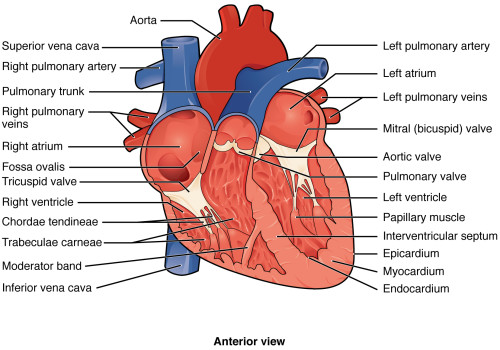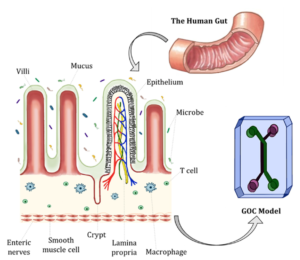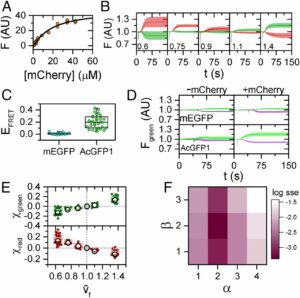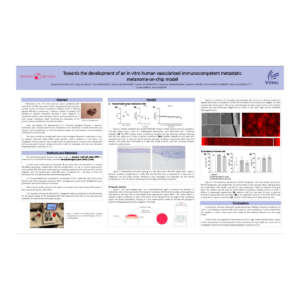Why a heart on a chip?
The heart is the central element of the cardiovascular system. If it is dysfunctional, other organs will not receive enough oxygen. Some pharmaceuticals induced cardiac rhythm impairment, which is a major cause of market withdrawal (around 1/3 of total withdrawal, e.g: the Mediator (benfluorex) scandal in France). Currently used models (cell line or animal testing) are not predictive enough of what is observed in humans. Moreover, heart diseases are responsible for 25% of the overall number of death in the USA, meaning that heart issues are a real public health concern.
FUN FACT: Benfluorex has been withdrawn from the French market in November 2009 because of higher risk (4 times) to develop valvulopathy. In the whole of the 2009 year, only 2 pharmaceuticals have been withdrawn from the market and in 2010 (one year after the benfluorex scandal), 14 drugs have been withdrawn from the French market, mainly due to heart adverse effects.

How to culture vascularized & immunocompetent 3D models in a standard Multiwell
What has already been achieved?
Preamble: heartbeats are generated by the heart itself, in the pacemaker zones, meaning that without innervations, the heart will continue to beat.
In 2011, the Parker KK team succeeds to make a heart on a chip where rat cardiomyocytes are cultivated on stripes (1). Cardiac cells then align and start beating. After exposure to chemicals, they are able to measure the effect on beating rate, electrophysiology, contractility, and morphology. They challenge the system with epinephrine and observed that the beating rate was 4 times higher (like observed in physiological context). This experimental system allows scientists to have an overall vision of the heart tissue reaction following chemical exposure.
At Louisville University, Giridharan and Palaniappan build a cylindrical bioreactor in which they cultivated H9c2 cells (embryonic heart cells) (2). Cells are exposed to a pulsated flow mimicking the heart cycle in the left ventricle. A video recording coupled with pressure sensors allows the characterization of the beat (diastole, systole) and to simulate hyper/hypo blood pressure.
A team hosted in Berkeley University (Luke P Lee and Kevin Healy) developed a heart on-chip from iPS cells (3). This heart has a rhythmic contractile activity. More important, coming from a patient with a heart rhythm abnormality, e.g. slower heartbeat rate, will also display the abnormality. It means that this system will be very useful to mimic heart diseases and so more efficiently develop new treatments.
Also based on iPS cells, a collaboration between the Wyss Institute, MIT, and Columbia University, aims at developing a heart-liver unit on-chip. Using cells from healthy and unhealthy patients, this system can be personalized to model specific diseases and so testing pharmaceutical in a personalized medicine context.
In May 2017, Wheeler and Kulp’s teams published a new platform able to simultaneously record iPS heart cells growth, contractility, and electrophysiology (4).
Bioengineers developed a heart valve on-chip allowing the screening of chemicals to assess their toxicity. The valve system consists of a membrane separating 2 microfluidic channels.
What’s next in the Organ on a chip heart field?
The future of an organ on a chip related to the heart is the interconnection of several organs to better predict the effect of a given chemical at the organism scale.
Heart disease is one of the most serious health problems of the world, as the number of heart failure death is rising. Most treatments slow down the progression of the disorder, which creates a great need for the development of new therapies. Those new solutions require getting more insight into the molecular and genetic nature of the underlying diseases, which cannot be solved without human heart disease models as the Organ on Chip model.
References
1: Lab Chip. 2011 Dec 21;11(24):4165-73. doi: 10.1039/c1lc20557a. Epub 2011 Nov 10. Ensembles of engineered cardiac tissues for physiological and pharmacological study: heart on chip. Grosberg A1, Alford PW, McCain ML, Parker KK
2: Anal Chem. 2010 Sep 15;82(18):7581-7. doi: 10.1021/ac1012893. Microfluidic cardiac cell culture model (μCCCM). Giridharan GA1, Nguyen MD, Estrada R, Parichehreh V, Hamid T, Ismahil MA, Prabhu SD, Sethu P
3: Sci Rep. 2015 Mar 9;5:8883. doi: 10.1038/srep08883. Human iPSC-based cardiac microphysiological system for drug screening applications. Mathur A1, Loskill P1, Shao K2, Huebsch N3, Hong S2, Marcus SG2, Marks N2, Mandegar M3, Conklin BR3, Lee LP4, Healy KE
4: Fang Qian, Chao Huang, Yi-Dong Lin, Anna N. Ivanovskaya, Thomas J. O’Hara, Ross H. Booth, Cameron J. Creek, Heather A. Enright, David A. Soscia, Anna M. Belle, Ronglih Liao, Felice C. Lightstone, Kristen S. Kulp, Elizabeth K. Wheeler. Simultaneous electrical recording of cardiac electrophysiology and contraction on chip. Lab Chip, 2017
Also, the link to go deeper :



